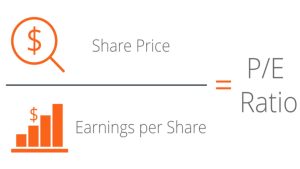Profitability ratios are a group of financial metrics which are applied to determine a company’s potential to produce profits over time in relation to its revenue, operating costs, balance sheet assets, or shareholders’ equity, utilizing information from a given point in time.
Profitability ratios, that determine how efficiently a business utilizes its assets internally to produce profits, could be compared to efficiency ratios.
Must Read – Types Of Ratios

Types of Profitability Ratios
- Return on Equity
- Earnings Per Share
- Dividend Per Share
- Price Earnings Ratio
- Return on Capital Employed
- Return on Assets
- Gross Profit –
- Net Profit
- Return on Equity
This ratio evaluates the profitability of the equity fund that is invested in the firm. It also calculates how profitably the owner’s resources were used to create the firm’s revenue. A strong ratio indicates that the firm is doing very well.
Formula – Profit after Tax ÷ Net worth
Net worth = Equity share capital, and Reserve and Surplus
- Earnings Per Share
This ratio calculates profitability from the viewpoint of the typical stockholder. A higher ratio suggests that the business is performing well.
Formula: Net Profit ÷ Total no of shares outstanding
- Dividend Per Share
This ratio calculates the sum of dividend paid to stockholders by the firm. The high ratio indicates that the firm has excess capital.
Formula: Amount Distributed to Shareholders ÷ No of Shares outstanding
- Price Earnings Ratio
This ratio is used by investors to determine if a firm’s share price is undervalued or overvalued This ratio often reflects the investor’s perception of the firm’s revenue and payback time to its investors.
Formula: Market Price of Share ÷ Earnings per share
- Return on Capital Employed
This ratio evaluates the percentage return on the funds invested in the firm by its founders. A strong ratio indicates that the firm is doing well.
Formula: Net Operating Profit ÷ Capital Employed × 100
Capital Employed = Equity share capital, Reserve and Surplus, Debentures and long-term Loans
Or Capital Employed = Total Assets – Current Liability
- Return on Assets
This ratio calculates the earnings per rupee of assets invested in the business. A strong ratio indicates that the enterprise is doing well.
Formula: Net Profit ÷ Total Assets
- Gross Profit
This ratio calculates the firm’s marginal profit. This ratio can also be used to determine the income of a segment. A high ratio implies a higher profit margin, which is favourable to the firm.
Formula: Gross Profit ÷ Sales × 100
To calculate Gross Profit, add Sales & Closing Stock from the sum deduct op stock, Purchases & Direct Expenses.
- Net Profit
This ratio assesses a firm’s overall profitability by taking into account both direct and indirect costs. A strong ratio indicates that the business is doing well and has a positive return.
Formula: Net Profit ÷ Sales × 100
To find Net Profit, add Gross Profit & Indirect Income then subtract Indirect Expenses.



